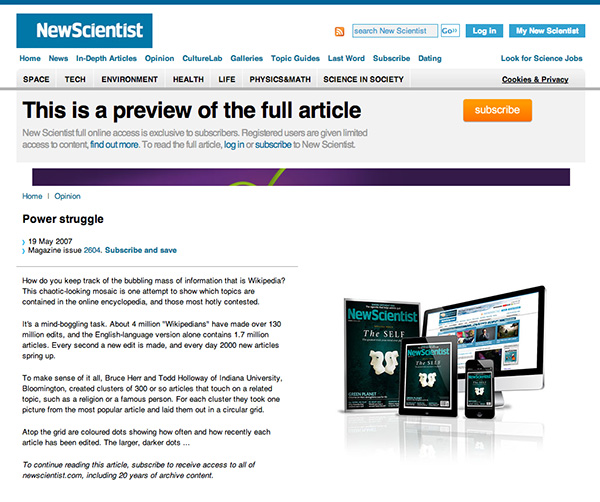Power Struggle
| New Scientist

The following is an article from New Scientist. Read the original article on the web here, or download a PDF of the article here.
How do you keep track of the bubbling mass of information that is
Wikipedia? This chaotic-looking mosaic is one attempt to show
which topics are contained in the online encyclopedia, and those
most hotly contested.
It's a mind-boggling task. About 4 million "Wikipedians" have made
over 130 million edits, and the English-language version alone
contains 1.7 million articles. Every second a new edit is made, and
every day 2000 new articles spring up.
To make sense of it all, Bruce Herr and Todd Holloway of Indiana
University, Bloomington, created clusters of 300 or so articles that
touch on a related topic, such as a religion or a famous person. For
each cluster they took one picture from the most popular article and
laid them out in a circular grid.
Atop the grid are coloured dots showing how often and how
recently each article has been edited. The larger, darker dots mean
more intense activity. The list of blitzed articles reveals the
idiosyncratic priorities of Wikipedians: Jesus, Adolf Hitler, Nintendo,
Hurricane Katrina, Britney Spears and Albert Einstein.
Updating the image in real time would allow Wikipedia's
administrators to spot where arguments are taking place, Herr
suggests. If rival contributors are repeatedly changing each other's
entries, for example, a page could be locked until the mood cools
(locked pages at the time of writing include entries on Sheffield
Wednesday football club, Mikhail Gorbachev and pigs).
The mosaic has been commended in a competition for images that
visualise network dynamics, coinciding with this week's
International Workshop and Conference on Network Science in
Bloomington.





